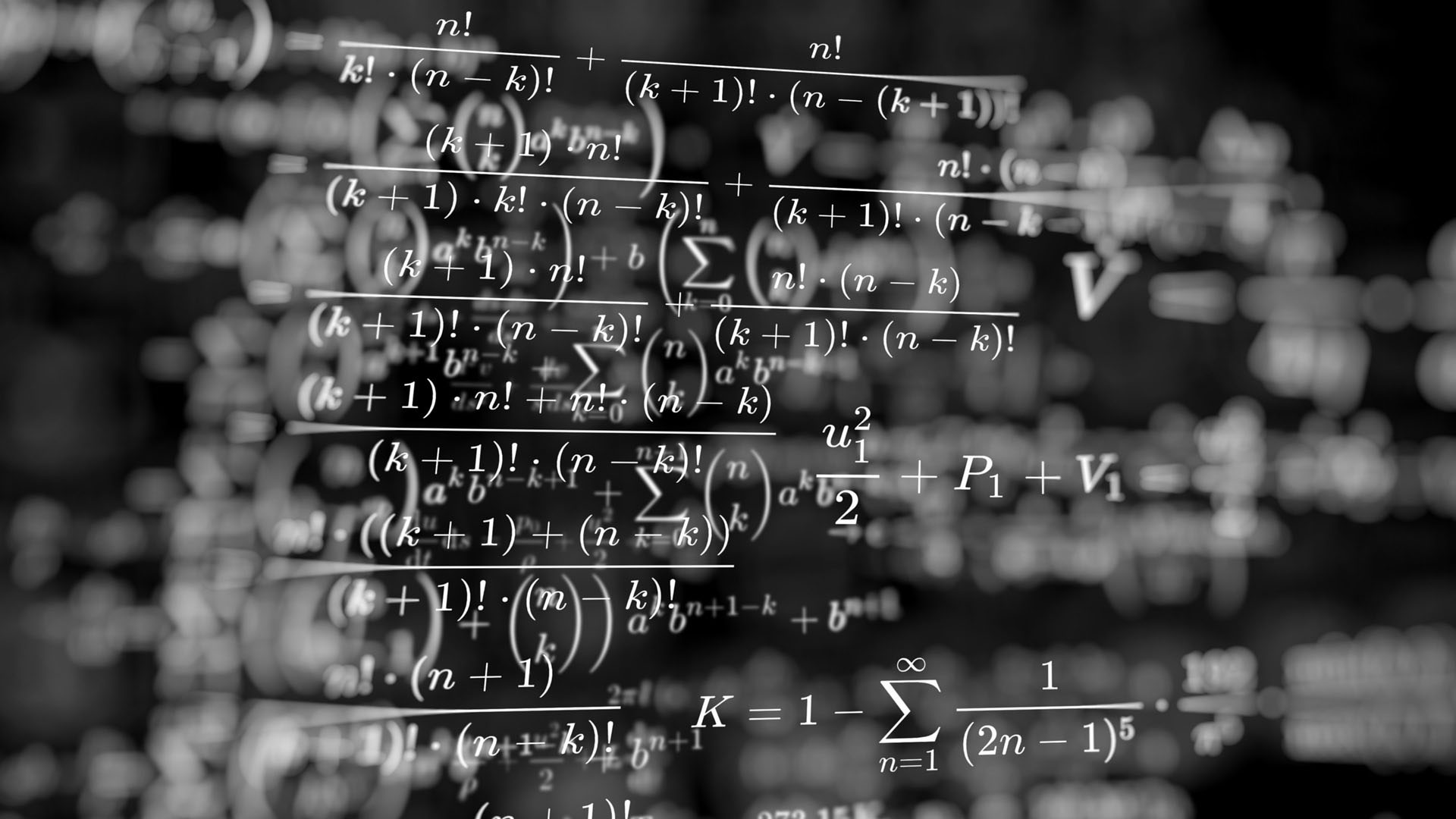Reading Time – 18 Minutes, Difficulty Level – Expert
In the realm of scientific collaboration, few partnerships have yielded as profound and productive results as the fusion of calculus and astrophysics. This mathematical framework, rooted in the concepts of change and accumulation, has been instrumental in illuminating the mysteries of the vast cosmos.
If you’re a fan of ‘The Big Bang Theory’ like I am, you’ve probably observed the intricate mathematics frequently adorning the whiteboards of characters like Sheldon Cooper and Leonard Hofstadter.
The show is renowned for its meticulous attention to mathematical accuracy, with calculus being a predominant feature.
The Genesis of Calculus: A Revolutionary Epoch
The quest to comprehend change has been a timeless pursuit throughout human history. While early mathematicians like Archimedes ventured into territories that foreshadowed integral calculus, the 17th century marked a monumental leap in these concepts, thanks to the parallel and complementary efforts of Sir Isaac Newton and Gottfried Wilhelm Leibniz.
Newton’s Calculus Innovations
The contributions of Sir Isaac Newton to calculus were nothing short of revolutionary. His exploration of ‘fluxions’ delved into the concept of the rate of change, providing insights into instantaneous velocities. He formalized the concept of a limit and devised techniques to ascertain the slope of tangents to curves, laying the cornerstone for differential calculus.
Newton’s exploration of calculus went hand in hand with his groundbreaking work in physics. The interplay between calculus and physics was exemplified through his laws of motion and universal gravitation. His introduction of the derivative, represented as: \(v = \frac{dx}{dt}\) offered a foundational understanding of how objects move and change their positions over time.
Newton’s law of universal gravitation, expressed as \(F = \frac{G m_1 m_2}{r^2}\) unveiled the profound influence of calculus in comprehending celestial mechanics. In this equation, \((F)\) denotes the gravitational force between two masses \((m1)\) and \((m2)\) separated by a distance \((r)\). Through calculus, particularly differentiation and integration, scientists could predict celestial orbits, trajectories, and astronomical events with remarkable precision.
Leibniz’s Calculus Notations
Gottfried Wilhelm Leibniz, on the other hand, introduced a more structured notation for calculus, closely resembling the one employed today. His elegant use of symbols like \((dx)\) and \((dy)\) paved the way for generations of mathematicians and scientists to address intricate problems across various domains, including astrophysics.
Leibniz’s notation, featuring symbols like \((dx)\) and \((dy)\), revolutionized the expression and comprehension of calculus. It provided a more intuitive and versatile framework for resolving complex mathematical dilemmas. Leibniz’s notation made it easier to grapple with intricate equations that surface in the study of celestial mechanics and astrophysics.
Astrophysics: The Celestial Symphony
Astrophysics, with its roots in ancient stellar observatories, sought to unravel the enigmas of the celestial phenomena that adorned the night sky. As telescopes evolved and space exploration burgeoned, the demand for a robust mathematical framework became increasingly apparent, leading to the integration of calculus.
1. Kepler’s Laws and Planetary Motion
One of the earliest applications of calculus in astrophysics was in elucidating Johannes Kepler’s laws, which offer an empirical account of planetary motion. Kepler’s second law, asserting that a planet sweeps out equal areas in equal intervals of time, inherently implies variable velocity. Mathematically, this concept can be expressed as:
\(\frac{dA}{dt} = \frac{1}{2} r^2 \frac{d\theta}{dt}\)
Here, \(\frac{dA}{dt}\) signifies the rate of change of area concerning time, \((r)\) represents the distance from the planet to the central celestial body (e.g., the Sun), and \(\frac{d\theta}{dt}\) characterizes the rate of change of the angle between the planet and a reference direction. This equation proves indispensable in deducing numerous orbital characteristics.
Example Calculation – Kepler’s Second Law:
Let’s consider a planet orbiting the Sun with a semi-major axis of (a = 1) astronomical unit (AU). If the planet sweeps out an area of (A = 0.5) square AU in a time interval of (Δt = 1) year, we can use Kepler’s second law to calculate the rate of change of the angle (θ):
\(\frac{d\theta}{dt} = \frac{2 \cdot \frac{dA}{dt}}{r^2} = \frac{2 \cdot 0.5 \, \text{AU}^2/\text{yr}}{1 \, \text{AU}^2} = 1 \, \text{rad/yr}\)
This result indicates that the planet’s angular velocity is (1) radian per year, meaning it sweeps out equal areas in equal intervals of time.
Kepler’s laws provided a foundational understanding of celestial body motion. However, it was through the lens of calculus that these laws could be applied to a diverse range of astronomical phenomena. The capability to compute celestial orbits, prognosticate planetary positions, and grasp the mechanics of celestial bodies hinged on the mathematical tools provided by calculus.
2. Einstein’s Relativistic Cosmos
Albert Einstein’s theory of general relativity inaugurated a profound shift in our comprehension of gravity. Beyond Newton’s gravitational insights, Einstein envisioned gravity as the warping of the space-time fabric. This momentous paradigm shift gave rise to the Einstein Field Equations (EFE):
\(G_{\mu\nu} = 8\pi GT_{\mu\nu}\)
These equations govern the structure of the universe, offering tools to probe phenomena like gravitational waves, which ripple the space-time fabric itself, and black holes, where conventional physics reaches its limits.
Example Calculation – Einstein Field Equations:
Let’s take a simplified example involving the Einstein Field Equations. Consider a static and spherically symmetric gravitational field, such as that around a non-rotating massive celestial object. In this case, the metric tensor \((g_{μν})\) has non-zero components only for \((μ = 0)\) and \((ν = 0)\) (corresponding to the time-time component).
The Einstein Field Equations for this scenario can be reduced to:
\(R_{00} – \frac{1}{2} g_{00} R = 8\pi GT_{00}\)
Where:
- \((R_{00})\) is the Ricci tensor component associated with time.
- \((R)\) is the scalar curvature.
- \((T_{00})\) is the energy-momentum tensor component associated with time.
Solving this equation involves intricate mathematical manipulations and often requires numerical methods due to its complexity. Calculus plays a central role in these calculations, allowing astrophysicists to predict the gravitational field around massive objects and explore phenomena like gravitational lensing and the bending of light.
3. Stellar Mechanics
Stars, the radiant celestial furnaces illuminating our universe, are not mere luminous orbs; they are the stages for nuclear fusion, regulated by a delicate equilibrium between gravity, striving to compress the star, and radiation pressure, propelling outward. This intricate choreography of forces finds expression in the stellar balance equation:
\(\frac{dp}{dr} = -G\frac{M(r)\rho(r)}{r^2}\)
In this equation, \(\frac{dp}{dr}\) signifies the change in pressure concerning radius, \((G)\) represents the gravitational constant, \(M(r)\) denotes the mass enclosed within radius \((r)\), and \(\rho(r)\) characterizes the density at that radius. Solving this equation, often through numerical methods that involve calculus, empowers scientists to delve into the evolution of stars, the nucleosynthesis processes within their cores, and the destinies that await them — from tranquil white dwarfs to cataclysmic supernovae.
Example Calculation – Stellar Pressure Gradient:
Let’s consider a simplified model of a main-sequence star. Given the star’s mass \((M)\) and its radius \((R)\), we can calculate the pressure gradient \(\frac{dp}{dr}\) at a specific depth within the star. The density profile within the star, \(\rho(r)\), is assumed to follow a power-law distribution.
\(\rho(r) = \rho_0 \left(\frac{r}{R}\right)^{-n}\)
Where \((ρ_0)\) is the central density, \((r)\) is the radial distance from the centre, and \((n)\) is a constant exponent.
To find the pressure gradient, we can use calculus:
\(\frac{dp}{dr} = -G\frac{M(r)\rho(r)}{r^2}\)
\(\frac{dp}{dr} = -G\frac{\left(\frac{4}{3}\pi r^3 \rho(r)\right)\rho(r)}{r^2}\)
\(\frac{dp}{dr} = -\frac{4}{3}G\pi\rho_0^2 r^{1-n}\)
This calculation provides the pressure gradient within the star as a function of radial distance. Understanding such gradients is crucial for comprehending the internal dynamics and stability of stars.
Stellar evolution engenders a complex interplay of physical processes, encompassing nuclear reactions, energy transport, and hydrodynamics. Calculus assumes a pivotal role in modeling these processes and unraveling the transformations stars undergo over time. Differential equations, in particular, serve as the vanguard for depicting the dynamics of stellar interiors and the journey of stars from their inception to their ultimate fate.
4. Cosmic Microwave Background (CMB) Analysis
The Cosmic Microwave Background (CMB), a remnant radiation from the Big Bang, offers glimpses into the early conditions of the universe. Analysing the minuscule temperature variations within the CMB necessitates advanced mathematical techniques grounded in calculus. The outcomes of these analyses shed light on cosmic inflation, the nature of dark matter, and the overall curvature of the universe.
Example Calculation – CMB Temperature Anisotropy:
The temperature variations in the CMB, known as temperature anisotropies, are crucial for understanding the universe’s early structure. To analyse these anisotropies, one often employs mathematical tools like Fourier transformations.
Consider a simplified case where we have a one-dimensional temperature profile of the CMB, \(T(x)\), where \((x)\) represents the spatial coordinate. We want to find the power spectrum of temperature fluctuations, which involves performing a Fourier transformation.
\(\Delta T(k) = \int T(x) e^{-ikx} dx\)
Here, \(\Delta T(k)\) is the Fourier transform of the temperature fluctuations \(T(x)\), and \((k)\) represents the wave number. Calculus, particularly integration, is fundamental in performing this transformation.
Analysing the power spectrum provides insights into the distribution of temperature fluctuations at different scales in the CMB, offering clues about the universe’s early conditions and its subsequent evolution.
5. Galactic Dynamics and the Dark Matter Enigma
Galaxies are not haphazard assemblages of stars; they are intricate systems characterised by complex dynamics. Observations of galactic rotation curves, particularly in the outer regions, defy predictions based solely on Newtonian physics. When astrophysicists juxtaposed observed rotation curves against those anticipated from visible matter (stars and gas), disparities emerged. The observed curves did not align with the projected ones, implying the presence of concealed mass — dark matter.
Example Calculation – Galactic Rotation Curve:
A key aspect of galactic dynamics is the rotation curve, which depicts the orbital velocities of stars and gas at various distances from the galactic center. The observed rotation curve \(v_{\text{observed}}\) deviates from the expected curve based on visible matter \(v_{\text{visible}}\), indicating the presence of dark matter.
\(v_{\text{observed}}(r) = \sqrt{\frac{GM(r)}{r}}\)
Where:
- \(v_{\text{observed}}(r)\) is the observed orbital velocity at radius \((r)\).
- \((G)\) is the gravitational constant.
- \(M(r)\) is the mass enclosed within radius \((r)\).
\(_{\text{visible}}(r) = \sqrt{\frac{GM_{\text{visible}}(r)}{r}}\)
Where:
- \(v_{\text{visible}}(r)\) is the expected orbital velocity based on visible matter.
- \(M_{\text{visible}}(r)\) is the mass of visible matter enclosed within radius \((r)\).
The discrepancy between \(v_{\text{observed}}\) and \(v_{\text{visible}}\) suggests the presence of additional mass, which is attributed to dark matter. Calculus is crucial in these calculations, as it helps determine the mass distribution based on the observed velocities and infer the existence and properties of dark matter.
The examination of galactic dynamics and the dispersion of dark matter relies heavily on calculus due to the need to resolve complex differential equations that delineate the gravitational interactions within galaxies. Calculus provides the essential mathematical tools for modeling the behavior of dark matter, a mysterious substance that eludes direct detection as it does not emit or interact with electromagnetic radiation. By deploying calculus-based simulations and analytical techniques, astrophysicists can proffer forecasts regarding dark matter’s impact on galactic structures and assess these forecasts against observational data.
6. Exoplanetary Transits and Light Curves
The quest to identify planets beyond our solar system (exoplanets) hinges significantly on light curves — graphical representations of brightness versus time. When an exoplanet transits its host star, the star’s luminosity diminishes. Calculus comes to the fore in determining the integral of the light curve, thereby divulging insights into the exoplanet’s dimensions, atmosphere, and potential habitability.
Example Calculation – Exoplanetary Transit Light Curve:
Consider the scenario of an exoplanet passing in front of its host star, causing a temporary decrease in the star’s brightness. The resulting light curve can be described by the following equation:
\(F(t) = F_0 – \left(\frac{R_p}{R_*}\right)^2\)
Where:
- \(F(t)\) is the observed flux (brightness) of the star at time \((t)\).
- \((F_0)\) is the baseline flux (brightness without the transit).
- \((R_p)\) is the radius of the exoplanet.
- \((R_*)\) is the radius of the host star.
To determine the integral of the light curve, which corresponds to the total blocked starlight during the transit, calculus is employed:
\(\text{Integral of Flux} = \int_0^{\text{duration of transit}} F(t) \, dt\)
This integral yields pivotal insights into the properties of the exoplanet, such as its size, atmospheric composition, and potential habitability.
Exoplanetary transit observations and the subsequent analysis of light curves have unveiled a plethora of exoplanets in our galaxy. Calculus, particularly in the context of integrals and derivatives, serves as the bedrock for interpreting these light curves and extracting vital information about exoplanetary systems.
7. Accretion Disc Dynamics
Enveloping numerous massive cosmic entities, such as black holes and neutron stars, are accretion discs — zones of matter spiraling inward. The physics governing these discs, particularly radiative processes and viscous forces, is extraordinarily intricate. Calculus, renowned for its capacity to elucidate change and accumulation, aids in disentangling and integrating these processes across the disc’s volume. This elucidation unveils insights into the disc’s structure, temperature profile, and radiation emission, all of which are instrumental in understanding phenomena like quasars and X-ray binaries.
Example Calculation – Accretion Disc Luminosity:
To comprehend the luminosity of an accretion disc, calculus plays a pivotal role. The luminosity \(L\) is often related to the accretion rate \(\dot{m}\) through the following equation:
\(L = \dot{m} c^2\)
Where:
- \(L\) is the luminosity.
- \(ṁ\) is the accretion rate.
- \(c\) is the speed of light.
To calculate the luminosity of an accretion disc, one must integrate the mass accretion rate over the entire disc volume. This integration involves calculus and is typically executed through numerical methods.
The study of accretion disc dynamics demands a profound understanding of calculus, as it facilitates the resolution of intricate equations governing the behavior of matter spiraling toward compact objects. The temperature gradients, energy dissipation, and radiation emission within accretion discs are all contingent on complex mathematical models rooted in calculus.
Concluding Thoughts
The exploration of calculus and its profound connection to astrophysics, spanning from its inception to its multifaceted applications, serves as a testament to the enduring power of mathematical thought. As humanity voyages further into the frontiers of cosmic understanding, the synergy between calculus and astrophysics remains central to shaping our future discoveries. The universe, vast and intricate, inscribes its narrative in the language of mathematics, with calculus offering the most poetic verses.
The intricate web of equations and mathematical models that underpins astrophysical research exemplifies the profound impact of calculus in expanding our knowledge of the cosmos. From planetary orbits to galactic structures and the behavior of enigmatic dark matter, calculus provides the essential tools for deciphering the universe’s most enigmatic phenomena.
As we gaze toward the future, the role of calculus in astrophysics is poised to grow even more significant. With the advent of powerful telescopes, advanced computational techniques, and innovative research methodologies, astrophysicists are embarking on ever more complex and challenging inquiries about the universe. Whether we are probing the nature of dark matter, deciphering the enigma of exoplanets, or unraveling the secrets of the early universe, calculus remains an indispensable companion in the quest for cosmic comprehension.
The profound connection between calculus and astrophysics represents a remarkable fusion of human ingenuity and the mysteries of the natural world. It serves as a testament to our capacity to employ abstract mathematical concepts to unlock the profound enigmas of the cosmos.
As we continue to push the boundaries of human knowledge, the synergy between calculus and astrophysics will undoubtedly remain one of the most enduring and fruitful collaborations in the annals of science. The universe, in all its grandeur and complexity, beckons us to partake in a symphony of numbers and stars, guided by the elegant principles of calculus, as we strive to uncover its deepest secrets.
I’m the founder of The Average Scientist and also an Astrophysicist, a passionate Science Communicator and elected Fellow of the Royal Astronomical Society.
I regularly speak at various events, including our TAS Talks and theatre shows on subjects such as Astrophysics, Planetary Science and the Evolution of the Universe.








